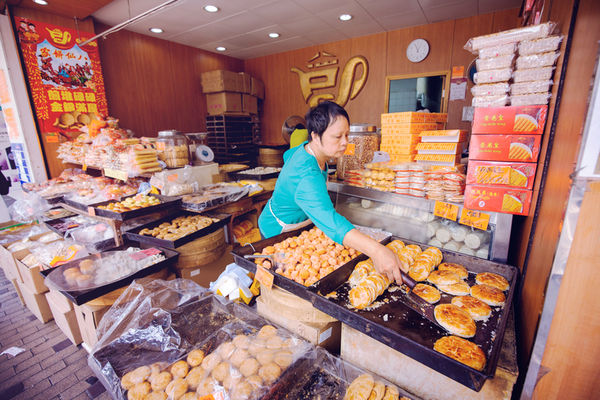
Hong Kong Dim Sum and Yum Cha are the great levellers in Foodie Culture.
In Hong Kong you can take a deep dive into the most beloved snack foods and appetisers in the world. Dumplings are generally known as Dim Sum. Dim Sum has a number of different meanings, as you'd expect from a food item that has been around since the Tang Dynasty - 618-907 AD. Some people like to think it means "barely fills the stomach", which is appropriate if you just go for one or two mouthfuls. But let's face it, who can stop at that when there are so many varieties and executions on offer. Other people like to consider the meaning as "Touch of the Heart", which might be more appropriate. Given the popularity and widespread nature of these little balls of heaven, it's not surprising that an entire culture has sprung up around them!
 Oh! The Dishes you'll know! Travel isn't just all about moving. It's about sitting down and making new friends.
Oh! The Dishes you'll know! Travel isn't just all about moving. It's about sitting down and making new friends.
Hong Kong Dumpling Etiquette.
As you would expect from a dish that was originally developed in the Chinese mainland (Guangzhou), there are a raft of traditional processes and a litany of cultural references to each dish. There are so many considerations to take into account. Where are you eating? How many of you are there? What is the occasion? There is Dim Sum and Yum Cha to suit any occasion. A Street Food snack on the go, or a Michelin Starred restaurant. Hong Kong has it all, and you can find it just about everywhere.
When eating in a restaurant, you will generally go for Yum Cha. Yum Cha means "Drink tea" and presents itself as more of a ceremony.
- The tea is always ordered first.
- The pourer always pours for themselves last.
- The other drinkers traditionally use 3 fingers to tap on the table as a gesture of thanks.
- Everyone takes turns to pour, even dignitaries at the table must take their turn.
It's believed that the 3 fingered tap on the table originated when an Emperor was at table and his servants or guests used discretion to mark respect.
In a restaurant, there will be personal and communal chopsticks. When touching food that others may eat, please remember to use the COMMUNAL chopsticks.
The traditional Dim Sum "Must Haves".
There are over 1000 varieties of Dum Sum dumplings. They can be Steamed, Deep Fried or Pan Fried. If you are familiar with Pot Stickers, or Money Bags, they are made with boiling water in the dough, to develop the gluten more effectively before they are subjected to the frying process. Steamed dumpling wrappers are generally made with cold water in the dough as the cooking process is longer and more gentle during steaming.
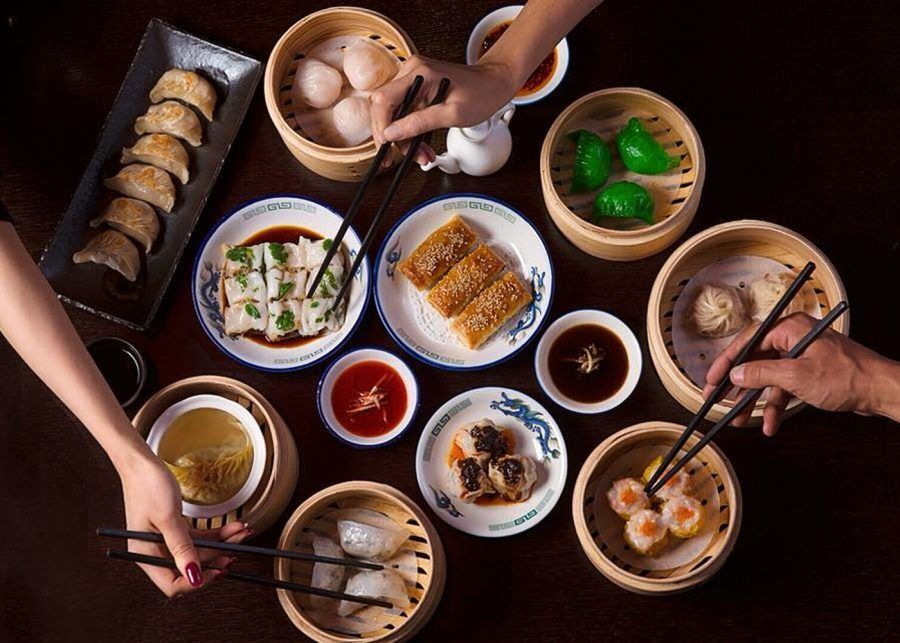 Endless varieties of Dim Sum for Yum Cha to satisfy every palate.
Endless varieties of Dim Sum for Yum Cha to satisfy every palate.
The creation of a proper dumpling wrapper is an art form and the shape of each type of classic Dim Sum is distinct. So what should you look for in a classic dumpling?
- An ideal level of stickiness - glutinous for a good chew and texture, but not enough to stick to the other dumplings or the paper in the steamer.
- A certain number of pleats - this depends on the style of the dumpling. For example, Har Gao (Har Gow) should have between 7 and 10 pleats to be considered up to standard.
- Perfectly cooked fillings, which should be visible through the translucent wrapper.
The classic Dim Sum menu.
- Har Gao: Sometimes written as 'Har Gow'. This is the most classic of all Dim Sum varieties. Translucent dumpling wrappers, packed with plump, delicious, seasoned, minced prawns. They should be able to be eaten in a single bite and have 7 - 10 pleats to show quality.
- Sui Mai: Minced prawns and pork, often with veg such as mushrooms. A signature pop of orange on the top of the filling, which is allowed to expand through the open top of the dumpling. This can either be carrot or crab roe, dpending on when and where you are eating and how much you are paying.
- Char Siu Bao: Char Siu is a slightly sweet Chinese style BBQ pork recipe that lends itself very well to the thicker Bao style wrappers. They can be steamed, in which case you have a bright white dough, or baked, in which case they are glazed and darker in colour.
- Cheung Fan: For those less used to Asian food, you could liken the structure to an Italian Canelloni. Wide, flat noodles are wrapped around whichever meat and veg you choose and served with seasoned soy sauce.
- Xiao Long Bao: Anthony Bourdain called these soup dumplings 'Pillows of Happiness' and he couldn't have been closer to the truth. Eat them hot to make the most of succulent pork and a rich, broth-like soup. Be careful not to burn your mouth - it's customary to pick them up in a deep spoon and puncture the dumpling wrapper to release the steam first!
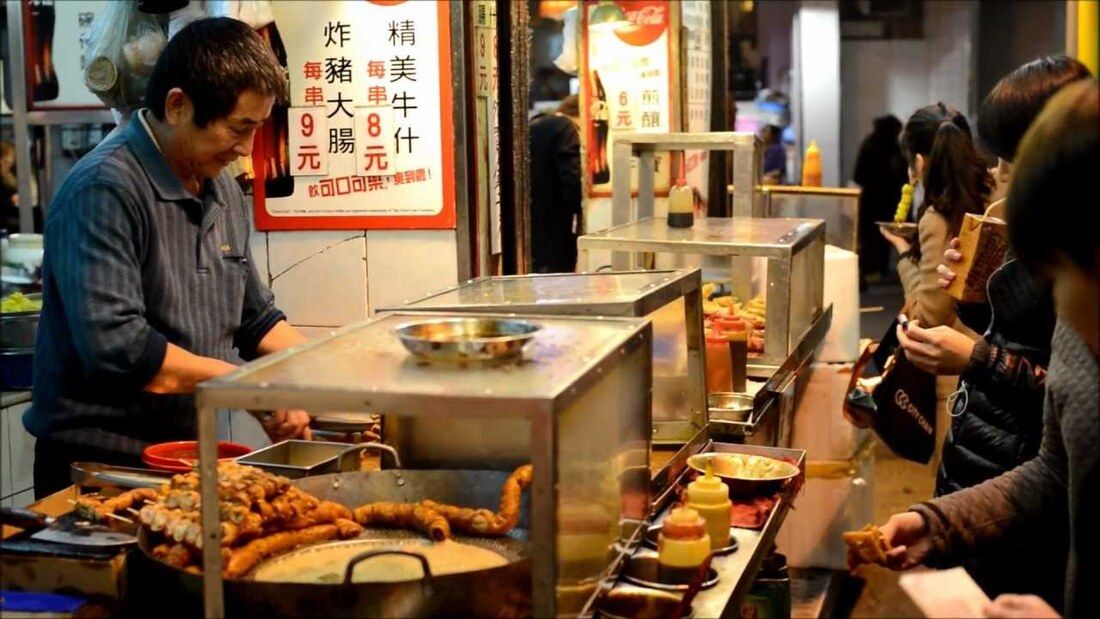 Street Food Stand in Tsim Sha Tsui, Hong Kong
Street Food Stand in Tsim Sha Tsui, Hong Kong
When a group of friends meet for Yum Cha, it's about making memories. Fill yourself with the most delicious of dumplings, then digest and chat over traditional tea for hours.
Of course, Dim Sum has evolved as it has become more popular. What was once steeped in tradition is now experiencing a renaissance as part of the trend for fusion food and the change in people's diets. As tradition collides with innovation, the hand craftsmanship meets colourful fads and more unusual flavour combinations. Pineapple has made its way into pork recipes and chefs have been working hard to adapt the classic lard-based recipes to produce vegetarian and even vegan-friendly options.
Food on the run - Hong Kong Street Food
One of the best things about travelling in Asia is the vibrant Street Food scene. You can hardly go a few steps in some neighbourhoods, especially at meals times, without coming across a roadside stand selling something delicious smelling. You can count out the extremely popular 'Stinky Tofu' on that description, but once you try it you'll never go back. Of course, some street food is very different to what you would find in a restaurant, but you can still find many Dim Sum staples. For example, the classic Siu Mai in restaurants is made from Prawns and Pork, but on the streets it's Fish and Pork. No less delicious, just a slightly different flavour.
Breakfast/Brunch:
- A refreshing sugar cane drink. Made from freshly pressed sugar cane, although it's sweet, it's completely natural.
- Cheong Fun. Deliciously chewy rice roll noodles seasoned however you like. The classic accompaniments are Sweet Sauce, and Peanut Sauce but are frequently paired with soy and chilli sauces and Sesame seeds.
- Roast Chestnuts. Savory and Smokey. These stands are to be found in most neighbourhoods. The wok is charged to high temperature before adding charcoal and burying the chestnuts. They are slow-roasted, giving off an amazing aroma on cool mornings.
- Tea Eggs. Boiled eggs, with a cracked shell are marinaded in herbal tea or herbal medicine. When peeled, they are a beautiful, marbled brown colour. Great for a hot and filling winter snack.
- Egg Tarts (Dan Taat). These are sweet tarts with a Portugese origin that are thought to have come to Hong Kong via Macau. There are plenty of arguments as to which base is better - shortcrust or puff pastry, but for decadence, who can beat almost 200 layers of pastry with a sweet custard filling? There are a couple of well-known egg tart outlets. Try the Honolulu Coffee Shop or Kam Fung Cafe if you're in Wan Chai.
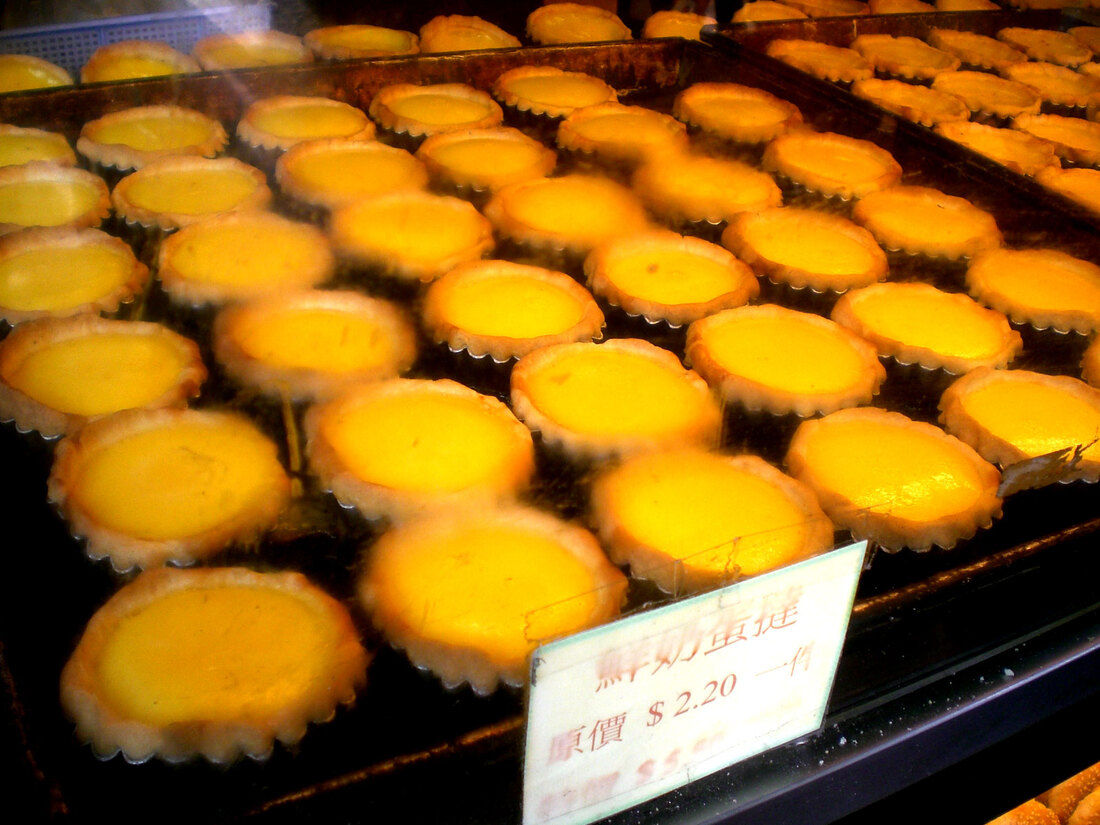 Hong Kong Breakfast Classic Egg Tarts
Hong Kong Breakfast Classic Egg Tarts
Lunch/Dinner:
- Roast Goose. These are the delicious, caramelised and glazed poultry that you see hanging in shop windows throughout Hong Kong. The crispy skin, juicy meat and lip-smacking, fragrant oil provide amazing textures and flavours on their own or as a foil to a bowl of plain steamed rice.
- Cart Noodles. The traditional Hong Kong Hawker dish, this is the ultimate in 'Choose your own' meals. You can choose everything from the type of noodles to the vegetables, broth and meat. 3 toppings is generally the standard, but you can go as big as you like. With over 20 toppings generally on offer you'll be hard-pressed to get through the combinations.
- Typhoon Shelter Cooking. An unusual name for a collection of dishes of diverse origins. This style of cooking was developed when the fishermen came together into the Typhoon shelters during bad weather. To feed themselves, they would use part of the day's catch and pool together to make a meal for everyone in the shelter. The mixture of ethnic influences brought together flavours from Thailand, Malaysia, Vietnam and The Philippines which melded with the Chinese style condiments, herbs and spices. To try some of the best, visit Greenland Spicy Crab in Tsim Sha Tsiu.
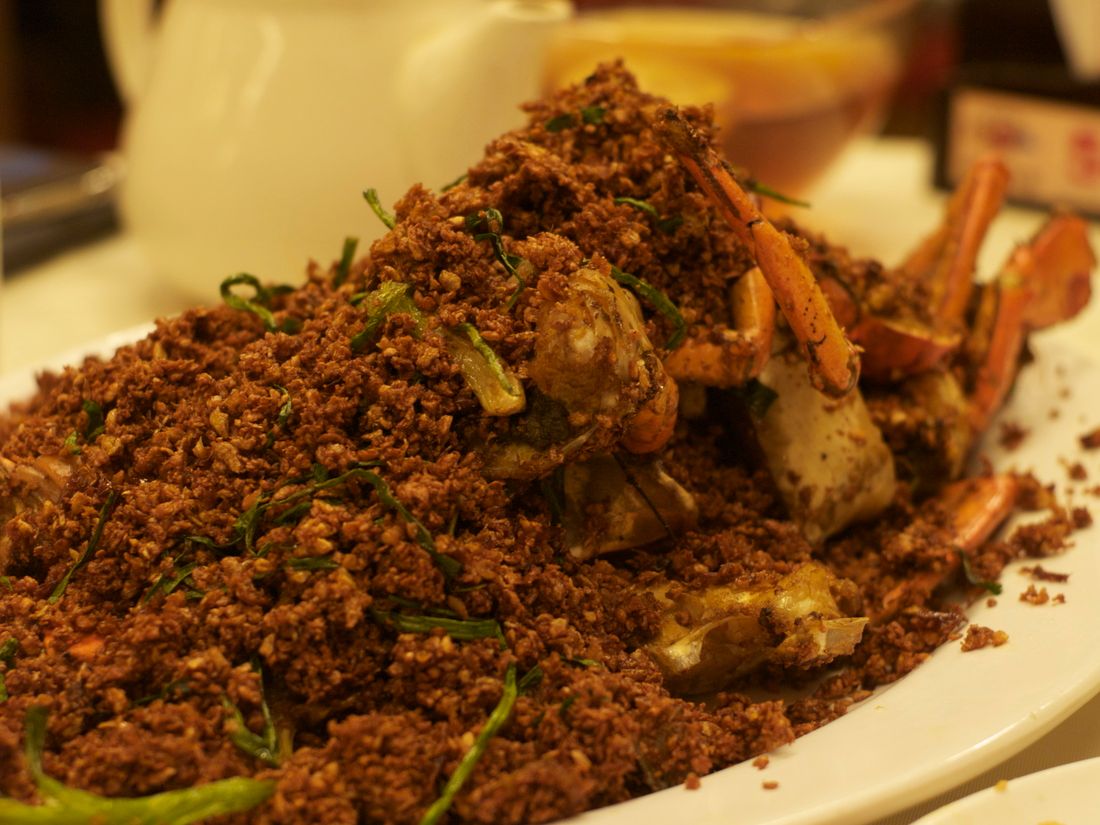 Typhoon Shelter Style Spicy Crab Fusion Food
Typhoon Shelter Style Spicy Crab Fusion Food
Whatever you come to eat in Hong Kong, you're going to have to get used to the idea of offal.
It's what gives a lot of dishes their bounce, bite and overall texture, and offal is a great natural flavour enhancer.
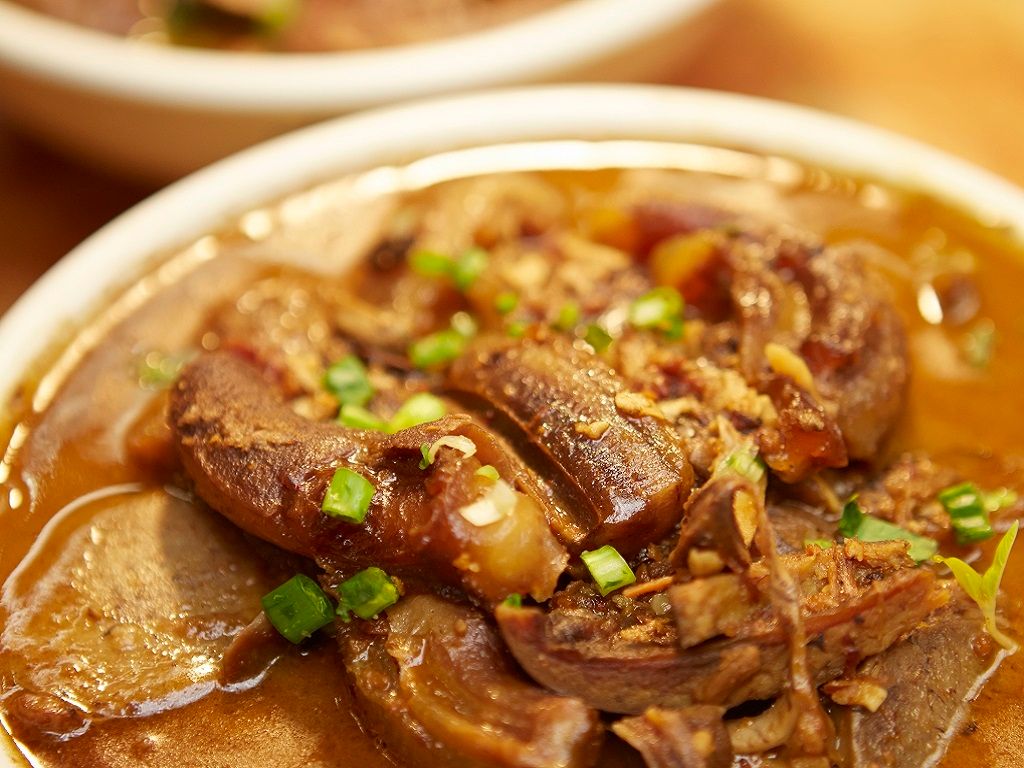 Hong Kong Offal Dish. Rich, delicious, nose to tail eating. Don't knock it until you've tried it!
Hong Kong Offal Dish. Rich, delicious, nose to tail eating. Don't knock it until you've tried it!
There are plenty of Foodie-focussed walking tours that will allow you to take in the personality of a Hong Kong neighbourhood whilst sampling the best snacks along the way. Make sure your guide knows of any dietary requirements that you adhere to for either health or religious reasons. If you'd prefer to go it alone, the area of Tsim Sha Tsui is great for food in the evening. It's Cosmopolitan, as popular with locals as it is with ex-pats and tourists, and has a bit of everything, from traditional 'Old China' vibe to Michelin-starred international dining. Wherever you find yourself in Hong Kong, one thing is for sure, you're not going hungry!
Images owned by Hong Kong Tourism Board and used with permission.
Other images courtesy of Creative Commons License.
Planning a trip to Hong Kong? See our Hong Kong Destination Guide here, or level up your holiday with a Hong Kong Travel Specialist.





